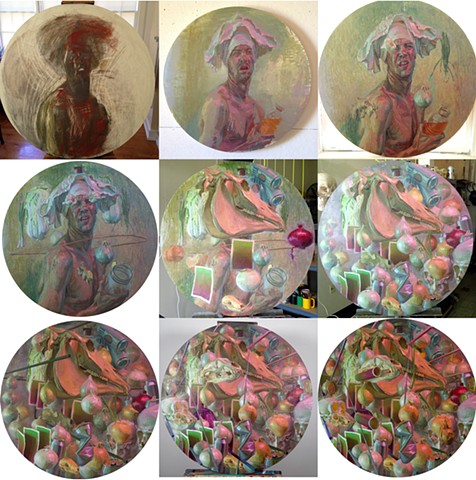STATEMENT

Cinema is the king of story-telling. Photography is a much more efficient form of documentation. Music is superior at catharsis. Television and the Internet own propaganda. That leaves painting the domains of materiality and ambiguity. I pack a painting with cultural and personal references and work toward an image that is provocative yet conceptually flexible. As more is added the compositions grow denser, tighter, and more intricate over time – like the tangle of a garden in late summer. The act of viewing my paintings is an unlocking of these internal relationships. Experiencing dense paintings that slowly reveal their nature can help us contend with the pervasiveness of fast-talking, slick images. In a media-riddled world, painting is a stabilizing force.
I construct elaborate setups and paint them through careful observation, focusing on the meanings objects collect post-consumption as they enter and participate in our lives. I sidestep Pop Art's ironic vision, and instead borrow stylistically from Flemish Golden Age painters and offer comment on material abundance in American culture. Of particular influence is the master of the crowded market stall, Frans Snyders, who mixed symbols of life and death, while embracing nasty moments as part of a delightful whole.
Implied narrative is an innate and inescapable fact in all paintings. The viewer will always manifest some sort of narrative meaning, and since the viewer brings absolution to a painting I fully support diverse interpretations. My intentions are to lean into what painting does well and trust that the ambiguity that arises is important.
I treat my paintings as objects as well as vehicles for information. The edges of the canvas inform my compositions, reinforcing the flatness of the picture plane. I want the viewer to feel the reality of the surface through the pressure of the edges while also engaged in a tangible painterly space. My abstract paintings empty-out imagery for a more direct attempt at harmonies of color, mark, and space. The flatness of the surface is about the present tense. The illusion of depth implies both the future and past. A tension between flatness and depth, image and object, compels a thorough inspection of my paintings up close and from a distance.